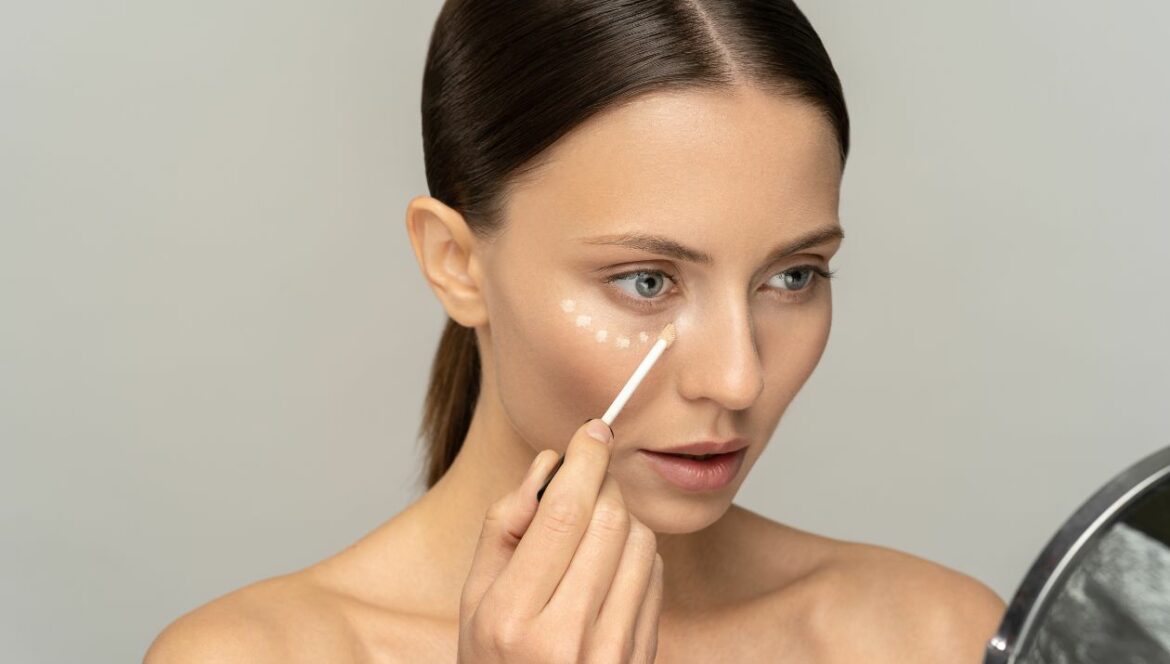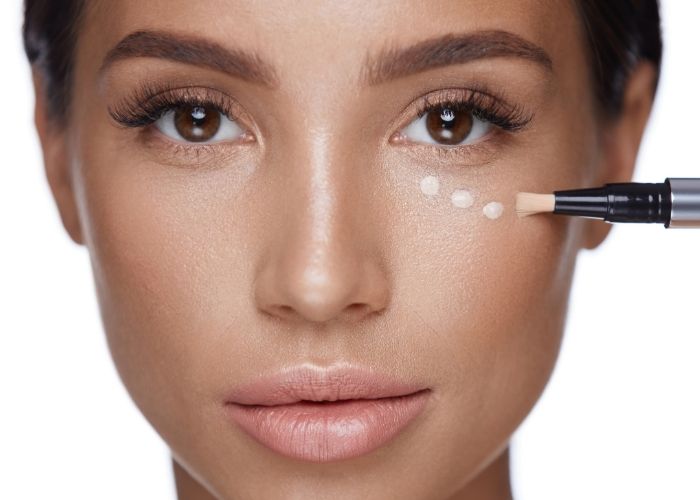How to apply concealer? Tips and advice

How many of you can't give up this "magical" product? Discover with us the best way to apply makeup and understand how to apply concealer.
Indeed, it is one of the most indispensable for our make-up routine and facial makeup, to have a good base, hide small skin imperfections, redness and blemishes such as pimples and dark circles.
Today we have a vast choice of concealers available, of all types and all colours, very often it is not easy to know how to choose and know how to apply them in such a way that it has a perfect result. You need to know how to distinguish the types of concealers on the market because each of them must be applied in different ways! Here are the main types and what they are indicated for:
FLUID CORRECTORS
This type has a liquid texture that is easy to apply and usually has a pen or brush applicator. They are usually more or less pigmented and are used to correct dark circles without highlighting some expression lines around the eye, they are also used to illuminate certain parts of the face. The color should be chosen based on the shade of the dark circles and the color of the skin.
Usually a pink-toned concealer is ideal for cold-colored dark circles, while a yellowish-based concealer is suitable for reddish or purple dark circles. These colors oppose each other because they are complementary and cancel each other out by covering the imperfection. If you want to brighten the area you will need to choose a product one or two shades lighter than your skin.
CONCEALER IN STICK\ CREAM
They are usually the most covering concealers. They are suitable for very noticeable dark circles, pimples and skin blemishes. They can have different consistencies: some are very buttery and creamy and are ideal for skin blemishes!
This concealer, unlike foundation, should not be chosen solely based on the color of your skin but also based on the areas on which you want to apply it, for example to correct discolouration. Absolutely avoid choosing a shade that is too light to hide dark circles, because it "turns off" almost all types of dark circles, especially bluish or cold ones. As regards discolorations, in the cream and stick versions, we find various colors to apply based on the problem to be solved.
- How to apply green concealer: Ideal for correcting all skin redness, such as cuperose or pimples.
- Purple concealer: Used to eliminate dark spots on the skin and restore luminosity to dull complexions.
- Yellow Concealer: Corrects blue to purple imperfections.
- Orange\peach concealer: Excellent for evening out the color of dark skin, reduces redness and greyness. It is also ideal for those dark and bluish dark circles; it can be used as a corrective base before using a corrector of your own color.
- Pink concealer: Gives a lot of brightness to areas of the face and very light skin with a pink undertone.
How to apply concealer?
There are different ways of applying it, very often we use already integrated brushes if they are fluids, or sponges even in the case of more compact concealers, but absurdly the best way to apply it is with the fingers!
Unlike all tools, your fingers heat the product, making the color uniform with the skin and is especially ideal for the dark circle area. Instead, the classic oval sponge, the beauty blender, it is the best to ensure that the concealer spreads correctly, blending it. The makeup brush, on the other hand, is excellent for covering small imperfections such as pimples.
You have to be very careful with the quantities, here's how to apply the concealer: you must never put too much product or you will have the opposite effect, i.e. highlight the signs of the skin. How many of you have found concealer in the "creases" of your eyes? It is precisely because of the excess of product, it is better to apply it "in layers" if necessary, blending between one application and another.

If there are many discolorations and defects it is best to proceed before applying foundation. Then use the different color concealers that I listed before and then proceed with the application of the foundation and finally apply the concealer that you usually use, if you want greater brightness you can also use the illuminating one (also for contouring). To hide blemishes or redness, dab the concealer on the surface and spread outwards, to avoid the mask effect.
For pimples, however, you need to avoid spreading the bacteria, so it should be applied with a special brush. For colored concealers, simply apply them where there are discolorations. As for the eye area, a triangle is created with the base under the eye, and the tip towards the cheek. This helps to make the area homogeneous and illuminate it without risking creating obvious color gaps. Once the triangle has been created, you need to blend starting from the internal corner of the eye to the external one.
To ensure greater durability it is important to fix it well with a light layer of face powder. In addition to ensuring extreme hold, it will make our face smoother and more uniform, also avoiding the "Shiny" effect.
A good concealer is also useful for cleaning imperfections while applying makeup, creating an eyeliner line, defining eyebrows, or as a primer on the eyelids before applying eyeshadow!

